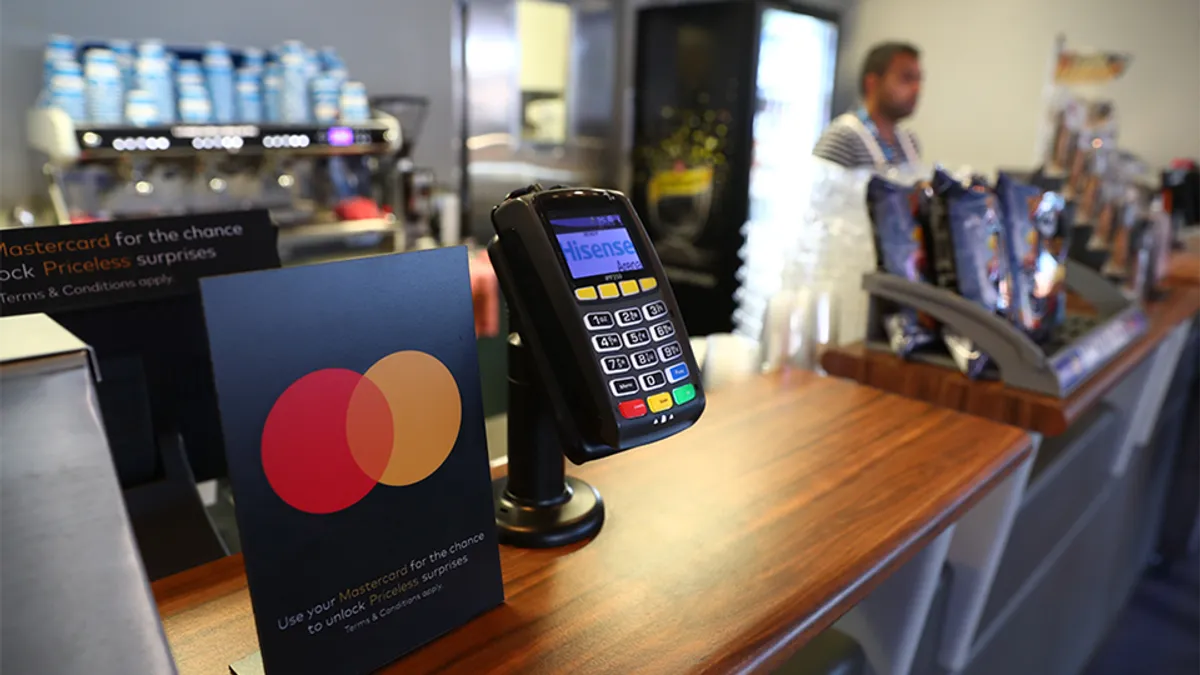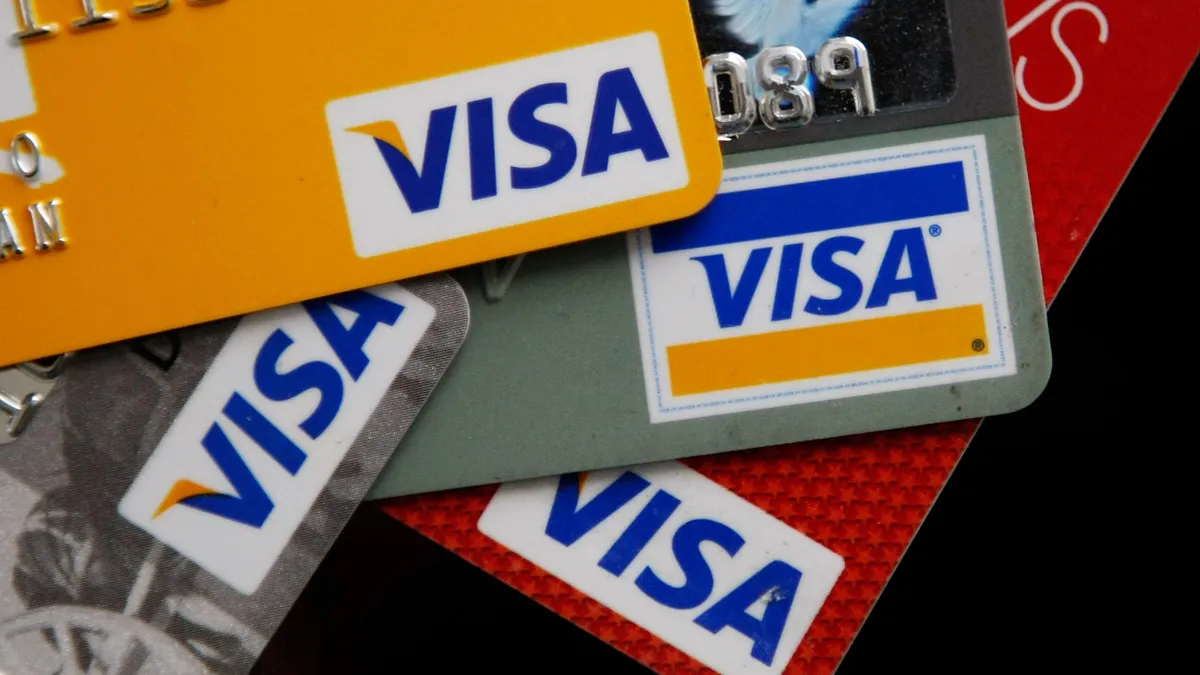Dive Brief:
-
As technology adds payments features to point of sale (POS) systems, the total value of transactions processed by POS terminals will exceed $17.3 trillion globally in 2026 compared to $14.8 trillion in 2021, a 28% growth forecast, according to recent Juniper research.
-
The pandemic reduced the use of cash and boosted contactless payments, leading many vendors to rework their payments options to better serve customers. The trend of changing payment patterns will continue as online retail and non-contact usage persists, according to the research.
-
Mobile point of sale (mPOS) and biometric POS will help vendors move towards both cashless and secure payments methods. These payment options will drive digital payments in emerging markets "with a large proportion of the population isolated from other forms of ePayment," the report stated.
Dive Insight:
The pandemic hastened the evolution of payments and vendors have to adapt to meet modern demands, according to the report. Upgrading technology is also a driving force in the growth of POS terminals as customers can transact with more ease and vendors can leverage new POSs to process payments and do inventory management and data analytics, the research found.
"The growth is driven by a continually evolving payment processing landscape in which cash plays a reduced role," the report stated. "POS vendors must ensure they support omnichannel retail business models and are prepared to compete with alternative payment methods such as QR code payments."
Smart POS are defined by their extra-functional capabilities in addition to payment processing. Supplementary capabilities of POS terminals extend to inventory management, AI assistance, data analysis, incorporated cameras for specific market verticals.
Appetize, a cloud-based software company that enables mobile ordering and contactless payment options, provides their services to the restaurant chains with 20 stores or at least 50 POS, Appetize Chief Strategy Officer Kevin Anderson told Payments Dive.
"We have a self service kiosk product that allows vendors to eliminate costs and allow the guests to order on their own, on their own time and their own screen, and we have a host of mobile and online ordering products that allow the guests to do pre ordering, or to view a menu by scanning a QR code on their phone," Anderson said. "And then we have a very rich back of a house set of functionalities that allow managers and C level executives to run their business from a very robust dashboard."
Appetize recently partnered with 15 major league baseball stadiums to upgrade their online-ordering and payment channels. The company's customer base grew by nearly 85% in 2020 over 2019 as more people are ordering online and using contactless payment options, Anderson said.
The pandemic increased online food delivery as people stayed indoors to order food. In 2020, the global online food delivery market’s revenue jumped by 27% year-over-year, reaching $136.4 billion compared to $107.4 billion in 2019, according to Stockapp and Statistica.com. The market is expected to grow to $182.3 billion by 2024.
The Los Angeles based company recently launched Appetize Payments, a platform that combines Appetize's payment processing services along with its inventory management and other cloud based services.
Biometrics POS, smart POS and mobile point of sale (mPOS) are going to penetrate the mainstream payments market as transactions go digital, according to the report.
A biometric payment processor typically involves a fingerprint scanner to the POS terminal. This can either act as the sole precursor to initiate payment processing, or as an extra form of security confirmation. Biometric payments are potentially a point of access for users with limited banking or smartphone access, especially in emerging markets like Asian countries, specifically India.
"It was reported that 76% of low-income clients [in India] had completed no form of higher education, many of whom were illiterate," the report stated. "Biometric identification can enable these users to interact cashless with confidence."
mPOS is a fundamental challenge to the traditional retail layout of a centralized POS terminal. mPOS usually doesn't require extensive and expensive hardware installation and can help vendors expedite payments from customers, as they don't have to wait in ques to make payments. The terminals will grow from 20 million in 2021 to 32 million by 2026, a 56% growth in the coming five years, the report stated.













